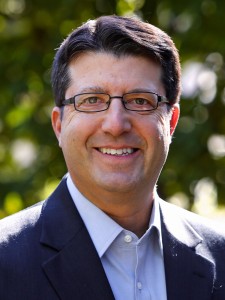It's Inauguration Day!
Congratulations, Matt vandenBerg, OWU's 17th President!
View details for Inauguration Day and stream the event live.
Congratulations, Matt vandenBerg, OWU's 17th President!
View details for Inauguration Day and stream the event live.

"As we confront the Coronavirus, the question is whether we are willing to make the sacrifices necessary to ensure the safety of our families and communities."
March 24, 2020
At times the past can provide a perspective on the present. This is one of those times.
 Polio was the most feared disease in America in 1954. Every summer it struck without warning, bringing waves of panic and pain to families and communities across the nation. It was impossible to predict who would be spared and who would not. Schools, camps, and pools closed at the rumor of a polio outbreak. Parents kept their children at home. Streets and playgrounds were deserted.
Polio was the most feared disease in America in 1954. Every summer it struck without warning, bringing waves of panic and pain to families and communities across the nation. It was impossible to predict who would be spared and who would not. Schools, camps, and pools closed at the rumor of a polio outbreak. Parents kept their children at home. Streets and playgrounds were deserted.
But in April the battle against polio took a dramatic turn. And it was a child who led the way. At an elementary school in McLean, Virginia, six-year-old Randy Kerr stood proudly at the head of a line of children about to receive an experimental polio vaccine designed by Dr. Jonas Salk. A nurse rolled up his sleeve; a doctor gave him the injection. The polio pioneer then smiled and said, “I could hardly feel it. It hurt less than a penicillin shot.”
The crusade for a cure was underway at last. It was the biggest story of the year. It was also the biggest public health experiment in history. By late spring, more than 600,000 children had followed Randy’s lead and received either the polio vaccine or a placebo at least once. That figure was a tribute to the passion and dedication of more than 300,000 anxious parents, school officials, medical professionals, and local volunteers.
A year later – on the tenth anniversary of the death of President Franklin Roosevelt, the most famous polio victim – researchers announced the verdict: The vaccine was safe and effective. POLIO IS CONQUERED read the headlines across the country. The nation celebrated as if it was V-J Day again. People laughed and cried with relief. Church bells rang and car horns honked. Factory whistles blew.
By 1956 polio was in retreat – for good. As a prominent scientist noted, “Our main problem now is not that anything is wrong with the Salk vaccine, but that something is wrong with the people who won’t take it.” America faces a similar challenge today. As we confront the Coronavirus, the question is whether we are willing to make the sacrifices necessary to ensure the safety of our families and communities.
Let us therefore remember that in 1954 hundreds of thousands of parents supported Dr. Salk by volunteering to have their children participate in a great experiment. Those parents were motivated by an abiding fear of polio – and a powerful faith in science. After surviving the Great Depression and World War II, they also believed in collective responsibility. Their courage and conviction helped make all Americans more secure. Their example should inspire us now.
Dr. Michael Flamm is a professor of history and scholar of modern American political history. This excerpt is from How 1954 Changed History, an Audible original available from Amazon.